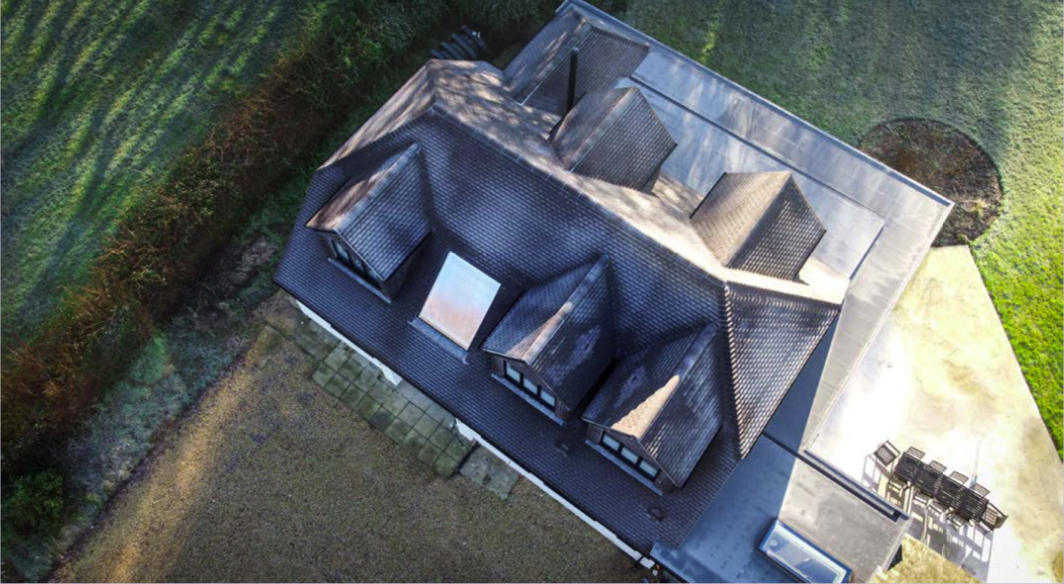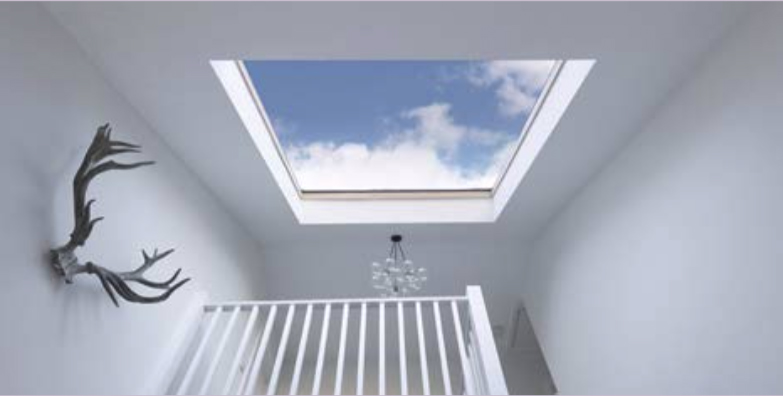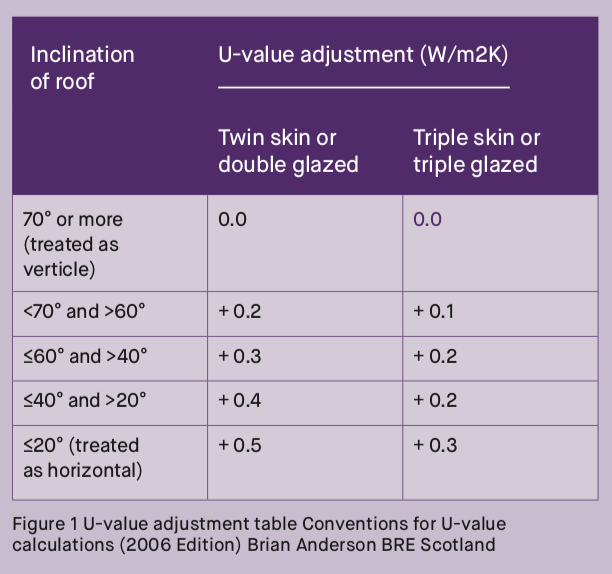Rooflights, skylights, roof windows and Part L
Contents |
[edit] Shedding some light on the new Part L Building Regulations
[edit] Why the need for new Regulations?
A major part of the UK’s commitment to meeting its targets for carbon reduction is being driven by a tightening of
the Building Regulations surrounding energy efficiency standards for homes.
The Ministry of Housing, Communities and Local Government (MHCLG) argues that by making our buildings more energy efficient and embracing smart technologies, we can cut energy bills, reduce demand for energy, and boost economic growth while meeting our targets for carbon reduction and maintaining healthy environments. As such, it has introduced The Future Homes Standard to ensure all new homes achieve a 30% improvement in energy efficiency standards by 2025.
The new Building Regulations aimed at achieving these targets will comprise five new Approved Documents, which will come into effect in June 2022.
Manufacturers, designers, specifiers and customers looking to install rooflights and roof windows will be most interested in uplifts to the Approved Document L, Conservation of fuel and power Vol 1: Dwellings.1
[edit] What do the new Regulations state?
For rooflights, skylights and roof windows (of which the definition is crucially important), the relevant consideration is the thermal transmittance. This is measured as a U-value in units of W/m2K, which stands for Watts/meter square Kelvin. The lower the U-value the more efficient the construction is at keeping heat flow through the structure to a minimum.
The new Regulations deem the worst acceptable U-values to be 2.2W/(m2K) for rooflights and 1.6 W(m2K) for roof windows.
[edit] Rooflights vs roof windows – what is the difference?
To correctly assess whether an element meets the new limiting U-value figure, the U-value must be calculated for the element in the appropriate plane – either horizontal or vertical. Now this makes a big difference, as testing the same product in either a horizontal or vertical position will make a significant difference to the resulting U-value figure. With the vertical position providing a much lower (better) U-value figure.
This is where the definition of the terms and roof window prove crucial in determining how they should be tested and what the relevant U-value should be for each.
According to the approved document the following definitions apply:
- Rooflight: A glazed unit installed out of plane with the surface of the roof on a kerb or upstand. Also sometimes referred to as a skylight.
- Roof window: A window installed in the same orientation as, and in plane with, the surrounding roof.
Therefore, while we might refer to our product as a rooflight or skylight, the official terminology for a conservation rooflight, which is designed to sit flush within a roof line, should be a roof window.
According to the approved document, the U-values for roof windows should be calculated based on a vertical position. For rooflights, U-values should be calculated based on a horizontal position.
Further guidance in the Building Research Establishment’s BR 4432 tells us that U-values for roof windows and rooflights are usually quoted for the in the vertical plane. This allows comparison of different products that could be used at different inclinations. However, for the purposes for calculating heat losses from buildings, U-values should relate to the plane of the component as installed in the building.
This can be done by calculating the U-value of roof lights and roof windows, allowing for the angle of the roof in respect of both surface resistances and gas space resistances. Alternatively, the following adjustments can be made to U-values assessed for the component in the vertical plane:
[edit] What is the best U-value that you are likely to achieve?
It is important to understand that there is much ambiguity surrounding rooflights, skylights and roof windows and the U-values quoted by various manufacturers. The much- coveted U-value figure has become a powerful sales tool for those claiming to be ‘the best performing’ or ‘most thermally efficient’ rooflight on the market and you will often see figures advertised that are misleading at best, at worst, completely untrue! Some companies might even try and confuse you by quoting the centre pane figure for the glass, rather than a whole frame U-value, which is the legal requirement. In any case, caution is advised when researching the various products available and you should always request evidence to support the thermal performance claims made.
U-value calculations for roof windows and rooflights must be undertaken by an approved UKAS accredited product certification agency, who will calculate accurate thermal performance figures based on the individual make up of components in the product’s construction.
Given that Stella use only the finest quality materials in our manufacturing process, from the highest specification glazing, to our high quality handmade hardwood liners, through to the best quality rubbers and seals, we are confident in claiming that our roof windows are among the best performing on the market, with our triple glazed, fixed product achieving a U-value of 1.1 W(m2K).
[edit] A huge caveat for conservation properties – exemptions for historic and traditional dwellings
While it is not always the case, it stands to reason that the majority of conservation rooflights are installed in traditional properties, barn conversions, and Listed buildings. If your project involves such a property, you may find that there are exemptions to these new regulations.
The approved document states that the energy efficiency of historic and traditional dwellings should be improved only if doing so will not cause long-term deterioration of the building’s fabric or fittings.
New extensions to historical and traditional dwellings should comply fully with the energy efficiency standards, unless there is a need to match the external appearance or character of the extension to that of the host building. In which case, the work should comply with standards in the approved document to the extent that it is reasonably practicable.
In determining whether full energy efficiency improvements should be made, the building control body should consider the advice of the local authority’s conservation officer.
Additional guidance is available in Historic England’s Energy Efficiency and Historic Buildings: Application of Part L of the Building Regulations to Historic and Traditionally Constructed Buildings.3
This article originally appeared in the CIAT AT Journal Issue 142 in summer 2022. It was written by Paul Trace, Director, Stella Rooflight. For more information about rooflights, roof windows and thermal performance contact Stella Rooflight, details below.
--CIAT
[edit] External references
- https://www.stellarooflight.co.uk
- https://assets.publishing.service.gov.uk/government/uploads/system/uploads/attachment_data/file/1082462/ADL1_revised.pdf
- https://www.bre.co.uk/filelibrary/rpts/uvalue/BR_443_(2006_Edition).pdf
- https://historicengland.org.uk/advice/technical-advice/energy-efficiency-and-historic-buildings/
[edit] Related articles on Designing Buildings
Featured articles and news
Latest Build UK Building Safety Regime explainer published
Key elements in one short, now updated document.
UKGBC launch the UK Climate Resilience Roadmap
First guidance of its kind on direct climate impacts for the built environment and how it can adapt.
CLC Health, Safety and Wellbeing Strategy 2025
Launched by the Minister for Industry to look at fatalities on site, improving mental health and other issues.
One of the most impressive Victorian architects. Book review.
Common Assessment Standard now with building safety
New CAS update now includes mandatory building safety questions.
RTPI leader to become new CIOB Chief Executive Officer
Dr Victoria Hills MRTPI, FICE to take over after Caroline Gumble’s departure.
Social and affordable housing, a long term plan for delivery
The “Delivering a Decade of Renewal for Social and Affordable Housing” strategy sets out future path.
A change to adoptive architecture
Effects of global weather warming on architectural detailing, material choice and human interaction.
The proposed publicly owned and backed subsidiary of Homes England, to facilitate new homes.
How big is the problem and what can we do to mitigate the effects?
Overheating guidance and tools for building designers
A number of cool guides to help with the heat.
The UK's Modern Industrial Strategy: A 10 year plan
Previous consultation criticism, current key elements and general support with some persisting reservations.
Building Safety Regulator reforms
New roles, new staff and a new fast track service pave the way for a single construction regulator.
Architectural Technologist CPDs and Communications
CIAT CPD… and how you can do it!
Cooling centres and cool spaces
Managing extreme heat in cities by directing the public to places for heat stress relief and water sources.
Winter gardens: A brief history and warm variations
Extending the season with glass in different forms and terms.
Restoring Great Yarmouth's Winter Gardens
Transforming one of the least sustainable constructions imaginable.


























